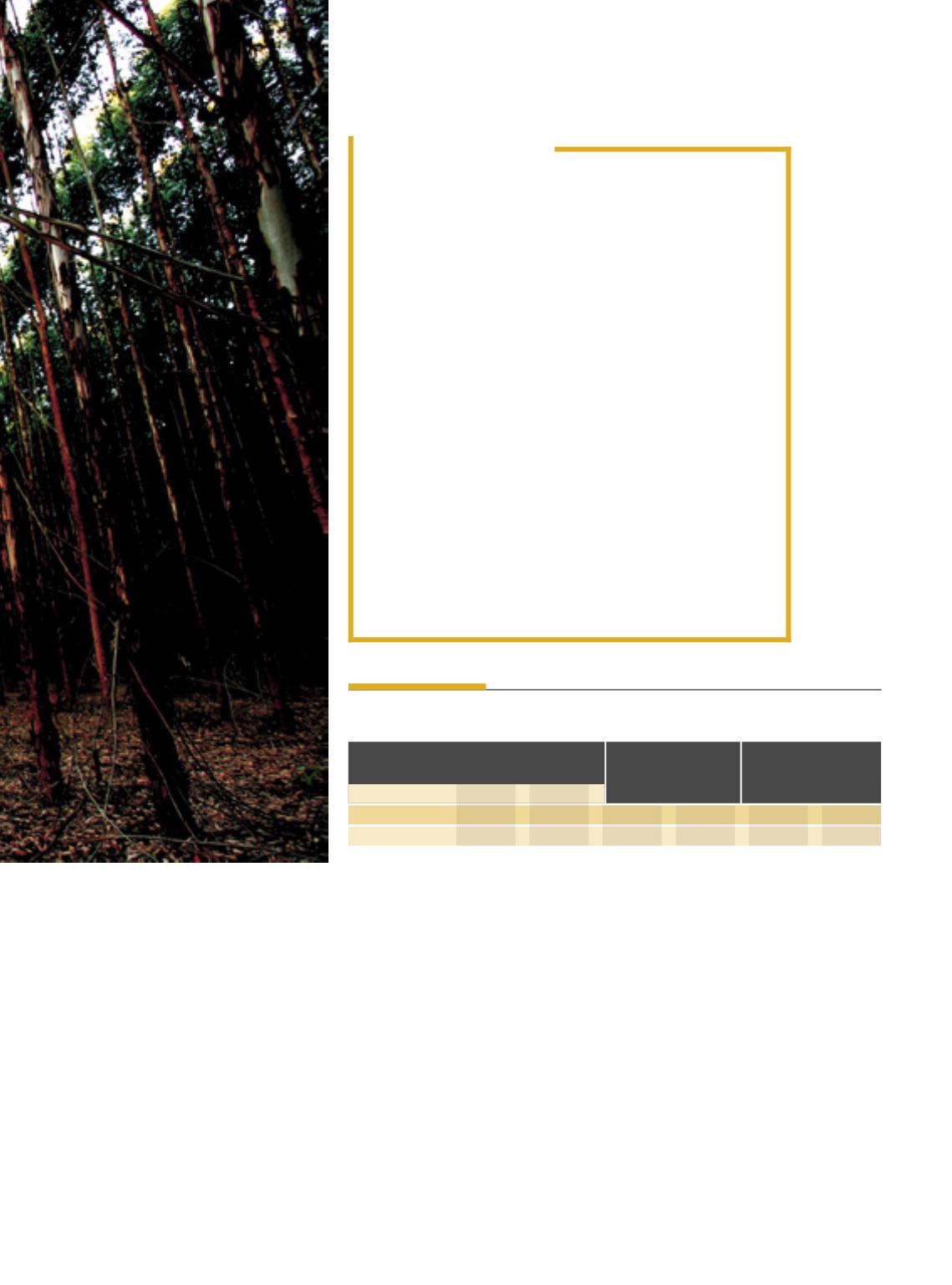
l
OUT OF SIGHT
The Brazilian forest sector comprises a total of 7.84 million hect-
ares of forests for productive purposes, especially eucalyptus, pinus
and theca. It represents less than 1 percent of the Country’s total area
and generates 3.7 million job positions: direct, indirect and jobs re-
sulting from the income effect. The sector equally protects another
5.6 million hectares of preservations in natural stretches through the
Permanent Preservation Areas (PPAs) program, Legal Reserve (LR)
and Private Reserves of Natural Asset (RPPNs), which retain another
2.48 billion tons of CO2eq, says the president of the Brazilian Tree In-
dustry (IBÁ), Elizabeth de Carvalhaes.
Sustainability andquality ensure goodperformance in the foreign
market. During 2017, up to November, Brazilian wood panels were
mostly shipped to Latin America, followed by North America. In the
year, demand from Asia and Oceania soared, as far as wood imports
go. “Cellulose exports have soared significantly to China, a country
that has been changing its behavior and has switched to tissue pa-
per in the every day needs”, he explains. Now, China represents al-
most 40 percent of our exports. “Demand fromEurope, a consolidat-
ed market, continues stable and represents less than 30 percent of
our exports. On the other hand, paper shipments aremainly destined
for Latin America, with almost 65 percent of all sales”, he concludes.
Productivity in the Country reaches 40
cubicmeters per hectare a year, but among
the affiliated companies there are produc-
tivity rates that reach 60 cubic meters per
hectare a year. Besides investments in for-
est productivity, the official stresses that
the sector bets on innovation and technol-
ogy, with research on products and devel-
opment, like biotechnology and nanotech-
nology. “The Brazilian sector is the most
sustainable in the world, standing out as
the country that greatly protects its natu-
ral resources, as for every hectare of plant-
ed forests for industrial purposes, 0.7 hect-
are is preserved”, he insists.
In the domestic scenario, the Brazilian
sector of planted forests is responsible for
91%of all the wood produced for industri-
al purposes and 6.2 percent of Brazil’s in-
dustrial Gross Domestic Product (GDP). It
is equally one of the segments with the
contribution potential for the construc-
tion of a green economy. The gross in-
come in 2016 amounted to R$ 71.1 bil-
lion. The cellulose market, according to
estimates by the Ibá, should produce
19.2 million tons in 2017, which repre-
sents a 2.3 percent increase from the re-
sult in 2016. The increase in exports is sup-
posed to be almost twice as much, up 4.3
percent, totaling 13.4 million tons.
On the other hand, the segment of pa-
per should produce 10.35 million tons,
up 0.1 percent from 2016. The domes-
tic market continues stable, while ship-
ments abroad went up 0.3 percent, to
2.11 million tons. In the sector of pan-
els, production is expected to soar 5.5
percent, to 7.7 million cubic meters, up
3 percent from the domestic market and
20.8 percent in exports. “Despite the
past years of crisis in the Brazilian mar-
ket, the sector never stopped investing
and kept all the jobs. The sector of plant-
ed trees should continue rising over the
next years, once the projection for invest-
ments from 2016 to 2020 runs at about
R$ 22 billion”, analyzes Elizabeth.
ATUAÇÃODEPESO •
GREATPERFORMANCE
BALANÇA COMERCIAL DOSETORDE ÁRVORES FLORESTADAS (US$MILHÕES FOB)
Participaçãono
No agronegócio
total doBrasil (%)
brasileiro (%)
Exportações
6.320
7.001
2016
2017
2016
2017
Importações
862
861
4,1
3,8
8,6
8,6
Saldo
5.458
6.150
0,8
0,7
7,8
7,3
Fonte:Secex/MDIC,Mapa.
Ano (Jan-Out)
2016
2017
75


